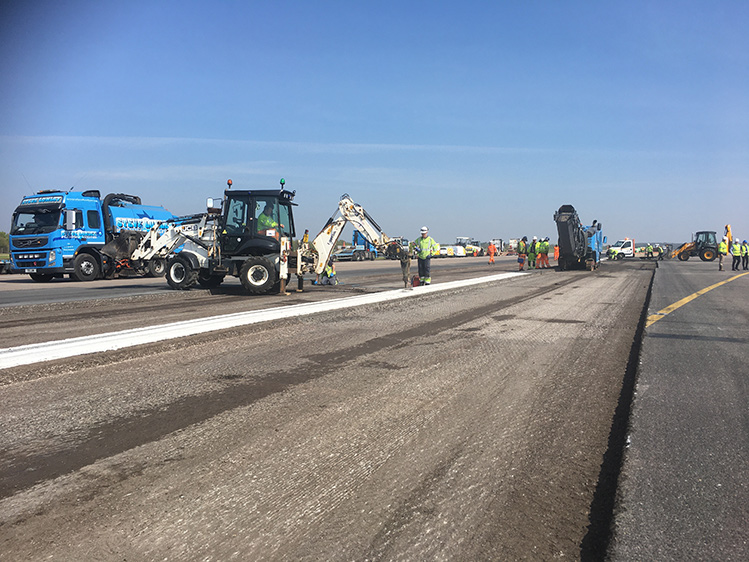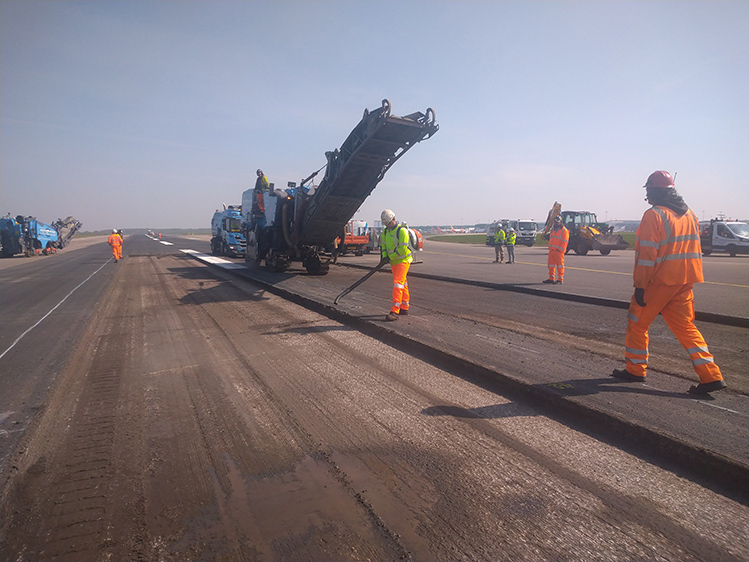London Stansted Airport’s engineering team is using the unprecedented grounding of aircraft across the globe as a unique opportunity to move planned overnight runway maintenance works to daytime hours.
The airport’s 3,048-foot runway undergoes full resurfacing work every 10 to 15 years but, as with other busy airports, regular heavy maintenance also takes place twice a year, overnight at weekends in the spring and autumn to minimise disruption to flights.
While the airport remains open for business with a limited number of commercial flights still operating, as well as a busy cargo operation that continues to transport vital supplies to the UK, the current reduction in flights has enabled the engineering and airfield operational teams to close the runway during part of the day. This change creates an extended period of time for specialist contractors to safely access the runway and makes it easier to carry out technical work in daylight hours rather than at night.

Kathy Morrisey, Asset Maintenance Services Director, London Stansted Airport: “The runway is obviously a key asset for the airport, and it’s critical it is maintained to the highest standard, so while we are in a situation none of us would wish to be in, we are using this as an opportunity to carry out essential work to ensure the airport is able to return to normal as quickly as possible once the current restrictions are lifted.”
The runway works are taking place on weekdays from 14 to 24 April 2020. The project is being managed by London Stansted’s Engineering Maintenance team and delivered by Marriott Civils, with up to 200 contractors and engineers, plus 100 vehicles and items of machinery tasked with laying the 1,000 tonnes of asphalt necessary to complete the work.
At the same time, 3,600 airfield lights are being upgraded with energy-efficient, high-performance LED lamps, similar to those already installed on the runway, which are crucial in the safe operation of aircraft in low visibility conditions. The new low energy LED variants will reduce power output from airfield lights by around 70%, helping drive down operating costs and cutting emissions.
“We all recognise this is an extremely difficult and challenging time for the whole country, and here at the airport it is no different following the dramatic and unprecedented reduction in flights,” says Kathy Morrisey, Asset Maintenance Services Director, London Stansted Airport. “The situation has, however, given us the unique opportunity to access the runway during the day when usually we would have hundreds of aircraft landing or taking off.
“This means that rather than a maximum of three-and-a-half hours a night over the weekend, the team will have up to six hours each weekday to complete complex maintenance work without the same time pressures and challenges of working overnight.
“The runway is obviously a key asset for the airport, and it’s critical it is maintained to the highest standard, so while we are in a situation none of us would wish to be in, we are using this as an opportunity to carry out essential work to ensure the airport is able to return to normal as quickly as possible once the current restrictions are lifted.”

London Stansted Airport’s engineering team is using the unprecedented grounding of aircraft across the globe as a unique opportunity to move planned overnight runway maintenance works to daytime hours.







